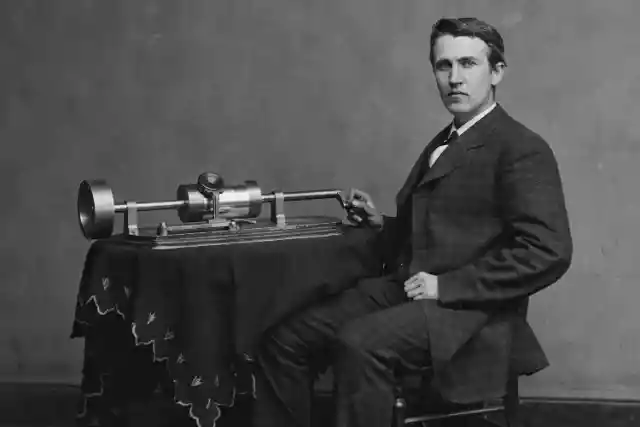Extreme Rivalry Spawns Extreme Results
The first lightbulb may have been a Thomas Edison creation, but there were two other innovators who figured out how to make them accessible to a far greater audience. Together, the three amazing minds, and their competitive spirits, made incredible advances in technology.
Much lesser known than Edison, were George Westinghouse and Nikola Tesla. Westinghouse was an established inventor, and Tesla was a creatively motivated Serbian engineer. A hundred years before the first Millennials were toddling around their homes, bathed in luxurious man-made lamp lighting, these three men were embarking upon a cutthroat race to the top level of electrical technology.
Nikola Tesla had an eidetic memory that allowed him to create and develop his inventions in his mind, before ever physically drawing them on paper. With less time spent on drawings, Tesla was able to work faster, and more efficiently, than his two competitors.


The trio agreed on one thing: advancing the world of electricity would mean advancing the human race. What they didn’t agree on, was how to do it.
Their goal was to make electricity more widely available to the public, and Edison believed the way to do it was through the use of direct current (DC). Conversely, Westinghouse thought the use of alternating current (AC) was the best way to achieve this goal. These ideas were deciphered for the present-day audience in the 2017 film, The Current War.
The US Department of Energy also translated the concepts of AC and DC, on its website, for those who don’t speak the language of physics. Basically, direct current runs electricity in one direction, while alternating current runs in two directions – forward and backward – using a transformer.
But a weakness in the direct current technique was identified: the further electricity traveled, the more energy it lost. In the book Empires of Light: Edison, Tesla, Westinghouse, and the Race to Electrify the World, Jill Jonnes said that alternating current was superior because of its ability to travel long distances, using transformers.
Edison knew that adding a motor to direct current systems would make up for its original weaknesses, but he actually had to create the machine that was in his head. For a short time, Edison and Tesla collaborated to design a motor, though Tesla was more interested in developing a motor to advance AC electricity than DC electricity, so their ideas didn’t align.
Much as his ideas clashed with Edison’s, Tesla’s ideas clashed with society’s expectations, wants, and needs. Generally, his thinking was way ahead of its time, which made him less successful, overall.
Much of Tesla’s work was dedicated to designing a system that would transmit moving pictures and voices, wirelessly. If that didn’t already sound like television and radio, Marc Seifer made it clear, in his book Wizard: The Life and Times of Nikola Tesla, that humans owe their intricate mass communication system to Tesla.
Edison’s Efforts


While Tesla was innovating at a level way ahead of what society was ready for, Edison remained fixated on direct current electricity – convinced that AC electricity was risky, because it required higher currents to run properly. He became known for his outspoken warnings against AC electricity, claiming that it would be responsible for killing people.
Around that time, Edison was approached by a member of a New York State commission dedicated to finding alternatives to hanging inmates, which was the capital punishment technique of the late 1800s. Though he didn’t believe in the death penalty, discrediting his fierce opponents was his top priority.
As a result, Edison recommended AC technology for capital punishment sentences. He then dedicated his time to perfecting his idea that AC electricity could and would kill a human. He teamed up with another Westinghouse opponent, Harold Brown, to prove that AC systems were more dangerous than DC systems.
Together, they developed the original electric chair, using AC generators. In 1890, they tested that chair on William Kemmler – a man convicted of murdering his wife. But, after a 17-second surge of AC electricity, Kemmler didn’t die. They administered a second round of electricity, which resulted in Kemmler’s body catching on fire. After four minutes, he finally died. Despite Edison’s efforts, Westinghouse and Tesla weren’t negatively affected by their technology being used in this way, and were both able to continue their work.
Electricity For Everyone


A few years earlier, Tesla had presented his AC motor to Westinghouse, who purchased the patent. Their next goal was to commercialize the AC technology. Jill Jonnes, author of the earlier mentioned Empires of Light: Edison, Tesla, Westinghouse, and the Race to Electrify the World, said that once the AC motor was created, there was no further question that AC electricity was the superior technology.
In 1893, Westinghouse’s company won the opportunity to power the country with electricity. Shortly after that, they installed AC generators in Niagara Falls, followed by the first hydroelectric power plant.
This was largely made possible thanks to Tesla’s futuristic innovations. Unfortunately, he didn’t receive much credit for his designs, while Edison went famously down in history as the man who created the lightbulb.
The major difference between the two men was money. Simply put, Edison had money, and Tesla didn’t. Edison was able to move forward, buying and promoting patented inventions. Tesla lost his funding and died without money or recognition for his work. Many never even knew his name until Elon Musk created a company and released a line of electric cars with the same name.
The earlier mentioned film, The Current War, also shed some light on some of the historical inaccuracies and omissions, unknown to society for over a hundred years. Today, people have finally become familiar with the amazing contributions that both Tesla and Westinghouse made to the development of electricity, as we know it today.